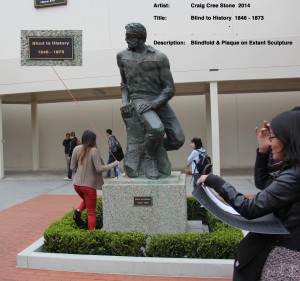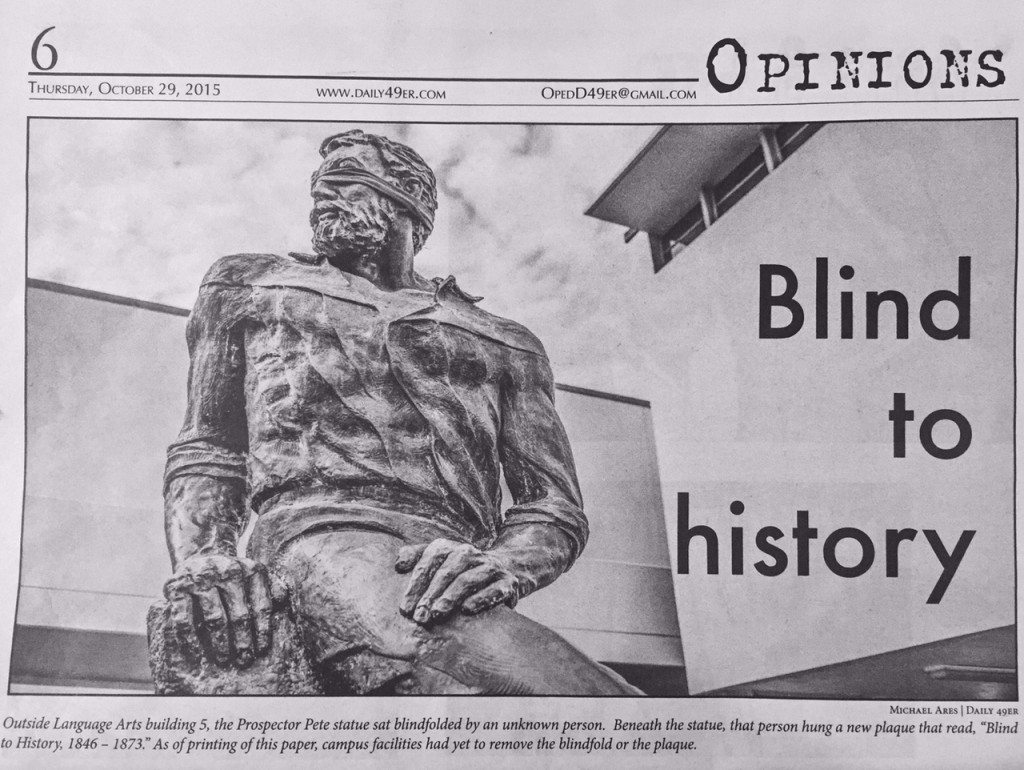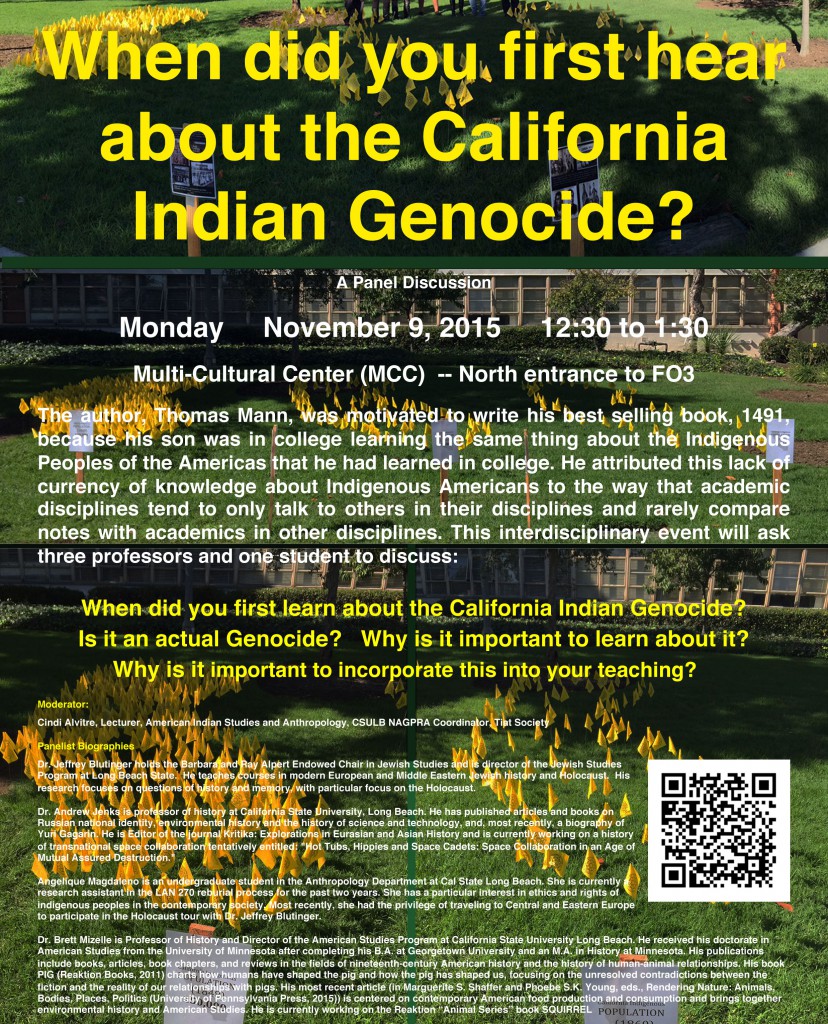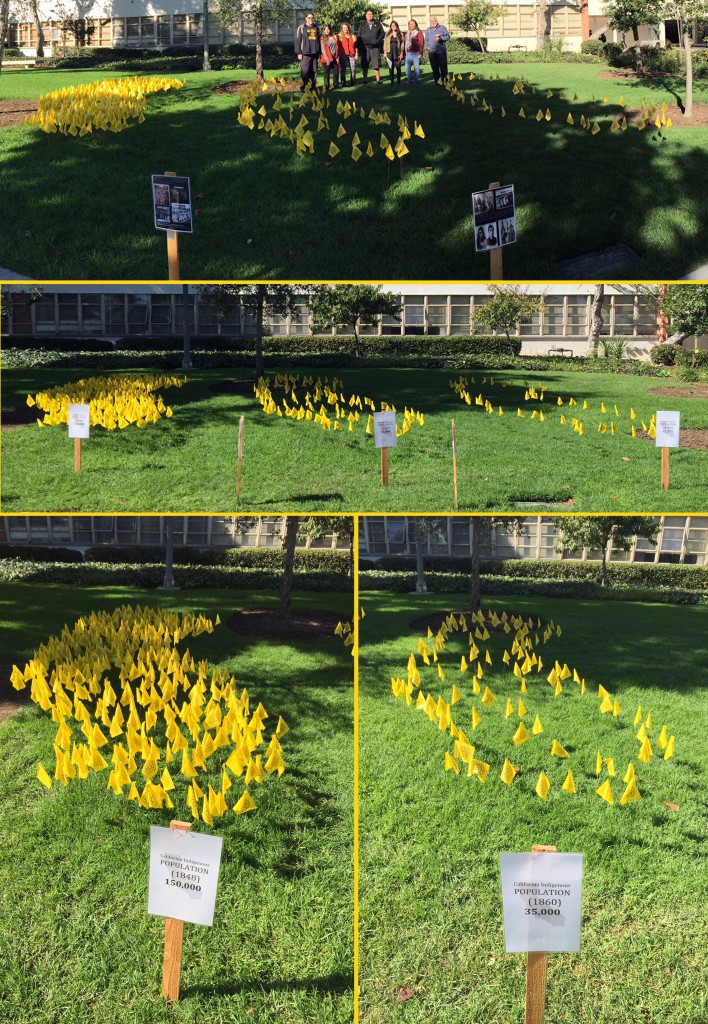When did you first hear about the California Indian Genocide?
 Panel Discussion: November 9th in the Multi-Cultural Center (MCC) 12:30 – 1:30
Panel Discussion: November 9th in the Multi-Cultural Center (MCC) 12:30 – 1:30
The author, Thomas Mann, was motivated to write his best selling book, 1491, because his son was in college learning the same thing about the Indigenous Peoples of the Americas that he had learned in college. He attributed this lack of currency of knowledge about Indigenous Americans to the way that academic disciplines tend to only talk to others in their disciplines and rarely compare notes with academics in other disciplines. This panel discussion will ask three professors and one student from different disciplines outside of American Indian Studies to discuss: When did you first learn about the California Indian Genocide? Is it an actual Genocide? Why is it important to learn about it? And, why is it important to incorporate this into your teaching?
Recently the high school AP (Advanced Placement) Exam for American History in the United States was revised and has been characterized by American Indian Studies Scholars and Historians as “perpetuating lies about American Indian Peoples”.
Link to article about new AP History Exam
Earlier this semester an American Indian Student at CSU Sacramento was told by her History Professor that she was expelled from his course for questioning his refusal to use the term Genocide to refer to the lived experience of American Indians. While she was not dropped and continues to take his course, the question still lingers.
Link to Article about History Professor in Indian Country Today Link to Article about History Professor on Fox News
Recently, California became the first state to ban the use of a name for school mascots that denigrates American Indian People, when Governor Brown recently signed Assembly Bill 30.
Link to article about AB 30 in Think Progress Link to article about AB 30 in ABC News.
The CSULB American Indian Studies Program is interdisciplinary in nature and currently has partnerships with eighteen departments and programs across several colleges. AIS is pleased to initiate this campus dialogue in partnership with the MCC (Multicultural Center), Jewish Studies, American Studies, History, the American Indian Student Council and the American Indian Science and Engineering Society Student Chapter about a subject that is seldom taught in the United States yet essential, not only to our understanding of the history of California, but more specifically, to understanding the implications of having “Prospector Pete” as our School Mascot.
Link to 2014 Press Telegram article about rebranding CSULB and retiring Prospector Pete
AISC Events Leading up to the Panel Discussion:
Leading up to the panel discussion the American Indian Student Council, AISES and the American Indian Studies Program will sponsor several events to raise awareness about this issue. The first project is Craig Stone’s “Blind to History” project that places a blindfold on the “Prospector Pete” statue that is locate between F02 where the History Department is located and the FO3 where the American Indian Studies Program, the Chicano and Latino Studies Department and the Asian and Asian American Studies Department are located. The statue is located in such a way that he is looking toward the History Department while turning his back to the Ethnic Studies Departments. This project was installed on October 29th and continues through November 5th and was presented on the AIS webpage for a week prior to installing the artwork (see image above).
Link to 49er article “Blind to American Genocide” Link to Blind to History Youtube Video Link to Blind to History Flash Mob Round Dance
November 2nd – Nov 5th AISC/AIS California Indian Genocide Awareness Public Art Project
Located on the lawn in front of the History Department, each golden flag represents 300 California Indians and has a printed logo with the slogan in the Tongva Language, “Twaa’aa Mohino Tehoovetmo” meaning: Count What You Value. (image below)
AISC & AISES answered questions about the California Native American Genocide at a American Holocaust table
during the week that was locate at various locations in the plaza by the History Department. (Image Below)


Initial “Blind to History” press coverage (image above) Images of unknown persons referred to above (image below)




